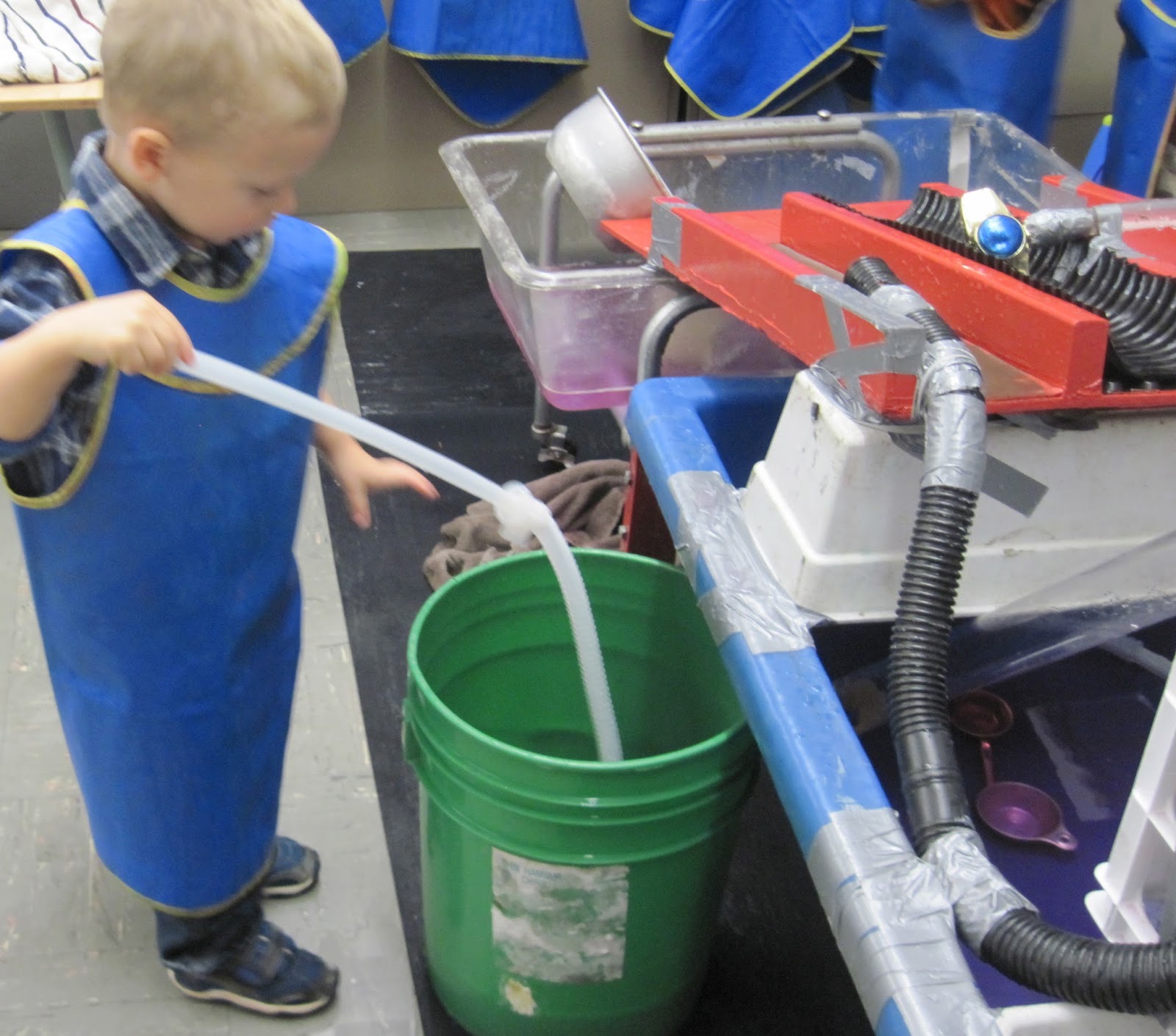This week let me introduce a second apparatus that shapes what I offer in the sensory table. In addition, it has changed how I perceive children's play at the table. The apparatus is a wooden tray that spans the width of the table creating a play zone above the table. The tray is a simple construction from scrap wood I found in the shed. There is a 1" x 10" base with 1" x 4" pieces nailed in place to form the sides. The seams are caulked and the whole thing painted. I did have to drill holes in the sides so water could drip back into the table preventing any potential overflow.
I had specific purpose in mind when I built this apparatus. I wanted to construct a small platform to allow children to work and pour hands-free. Imagine a child pouring water from the water table into a container he is holding---usually against his chest. Two things usually happen: 1) since he is just learning to pour, he misses the container so the water drips down his smock into his shoes; or 2) since he is just learning to pour, he overfills the container so the water drips down his smock into his shoes. Wet shoes, have you seen them before in your classroom?


Did it work? Yes, sometimes, like in these two pictures. Instead of holding the container against their chest, these two children chose to place the container in the tray and to pour hands-free. Notice the child on the left is overfilling his container---but none is going in his shoes.
As I watched the children play using the tray with different types of medium such as moon sand,
Or animal bedding,
Sometime during the course of my observations, I found a different type of tray. I was walking through the hardware store in the clearance section one Fall when I saw two planter trays that I thought I could somehow use in the sensory table. As luck would have it, they fit perfectly into the table. The lips of the planter trays rested nicely on the lip of the sensory table.
I also came across several more trays in our storage area at school. Since levels seemed to be an attractive element for the children, I decided to build a multilevel tray apparatus.
How many levels are there? 1 is the bottom of the table itself; 2 is the bottom of the two white trays; 3 is the bottom of the trays one level above the white trays; and 4 is the bottom of the top tray.
As you can guess, the children continually moved the medium from one level to another with abandon.
I do not know what the attraction is about levels. I think part of it is that children are constructively transporting from one space to another. Other than that, your guess is as good as mine. I do know that the children will find every level and use every level in their play and exploration. (See axiom #3 on the right-hand column of this blog.)
When you think in terms of levels, then, you realize that the original bucket also creates another level. For all intents and purposes, the level created by the bottom of the bucket is the floor. Believe it or not, children like to use the floor, so why not make it a constructive option?
We know the lowest level is the floor. What is the highest level? Since the children will use all the levels offered, maybe the question should be: What is the highest level you will allow?



























